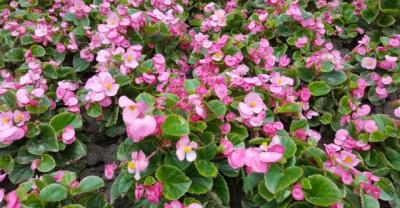Matters needing attention in the cultivation of Dryopteris Dryopteris
Ceratopteris prefers warm, humid and semi-shady environments. In order to cultivate antler fern well, we should pay attention to the following points:
The antler fern should be planted in a special pot (that is, several round holes are drilled on the pot wall, each hole is 3cm in diameter). When planting, fill the holes in the pot wall and bottom with fresh palm skin, then add rotten leaf soil, brown peat soil and slightly wet sawdust, and then plant the plant in the basin and put it in a cool place. You can also use a small amount of fern root, moss or rotten leaf soil with rotten cake fertilizer as the substrate to tie the plant to a section of stem with bark and hang it in a wet place. After the plant returns to growth, it is suspended under the ceiling or on the bookshelf where scattered light can be seen. Try to avoid touching the antler fern with your hands, otherwise the white villi on its leaves are easy to fall off.
During the peak growing season, water should be watered and sprayed frequently to maintain high air humidity. The peak growth period in summer needs more watering, watering in the morning or evening when the temperature is low, and often spraying water to maintain a high air humidity in the cultivation environment, which is beneficial to the growth and development of vegetative leaves and sporophytes. When it is low in winter, you should water less to prevent rotting roots. Watering time is arranged as far as possible when the temperature is high at noon on a sunny day.
During the growing period, diluted cake fertilizer and water can be sprayed every ten days or rapidly available dilute urea can be sprayed on the leaves to keep the leaves green and thick. Every year, rotten leaf soil or moss are added to the potted basket of antler fern to facilitate the growth and development of neosporophyte. Most afraid of random fertilization, concentrated fertilizer and partial application of nitrogen, phosphorus and potassium fertilizer, it is required to follow the principle of "light fertilizer applied frequently, less and more times, and complete nutrition".
The optimum growth temperature is 18 ℃ ~ 30 ℃, avoid cold frost, keep the overwintering temperature above 10 ℃, enter dormancy when the temperature drops below 4 ℃ in winter, and die of frostbite if the ambient temperature is close to 0 ℃.
The antler fern is afraid of strong light, so it is necessary to avoid strong light or dry wind. Outdoor maintenance should be placed in the shade or shade, at the same time pay attention to often spray water to the leaves. Outdoor maintenance, can be hung under the shade, to avoid hot sun exposure, so as to avoid leaf yellowing, burning, affecting the ornamental value of antler fern. Move to outdoor semi-shade or shade for a month every one or two months to accumulate nutrients and restore growth.
Follow WeChat account: xiaobency shares around 9: 00 every day, and ten thousand people listen to it.
- Prev

Culture methods and matters needing attention of succulent plant Isuzu jade
Spring is a season full of hope, the fragrance of flowers everywhere, people's faces are filled with happy smiles, incomparably brilliant. Spring drove away the cold of winter.
- Next

The taboo of breeding longevity flowers in winter! People who grow flowers must know!
Longevity flower is actually Christmas cabbage, this kind of flower has more varieties and colors, and there is the word Christmas in its name, which must be compared in this season.
Related
- On the eggshell is a badge full of pride. British Poultry Egg Market and Consumer observation
- British study: 72% of Britons are willing to buy native eggs raised by insects
- Guidelines for friendly egg production revised the increase of space in chicken sheds can not be forced to change feathers and lay eggs.
- Risk of delay in customs clearance Australia suspends lobster exports to China
- Pig semen-the Vector of virus Transmission (4)
- Pig semen-the Vector of virus Transmission (3)
- Five common causes of difficult control of classical swine fever in clinic and their countermeasures
- Foot-and-mouth disease is the most effective way to prevent it!
- PED is the number one killer of piglets and has to be guarded against in autumn and winter.
- What is "yellow fat pig"? Have you ever heard the pig collector talk about "yellow fat pig"?

